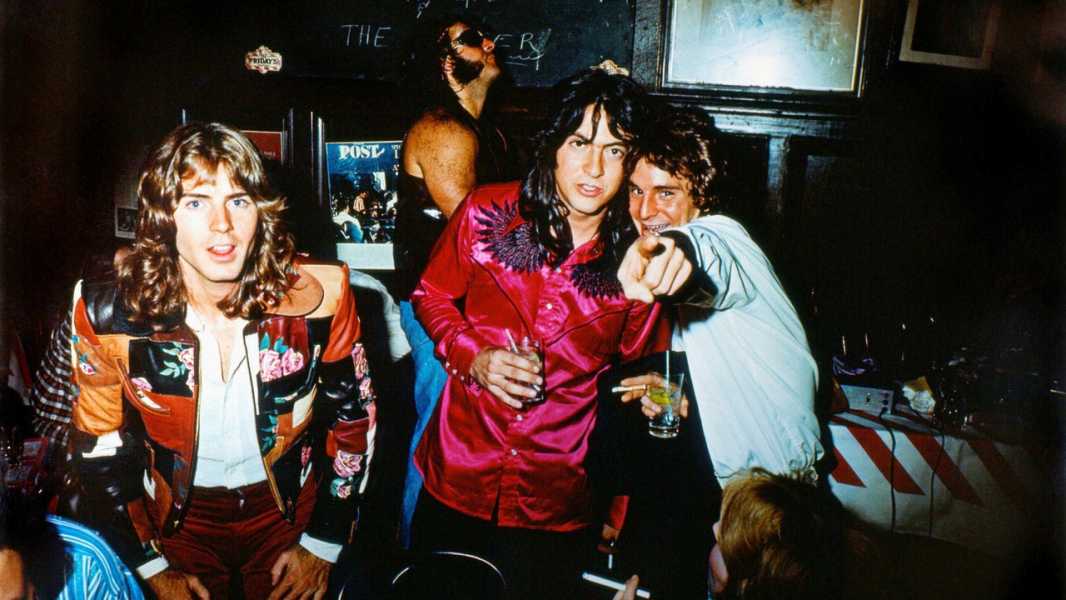
Save this storySave this storySave this storySave this story
In the early months of 1973, the band that dared to call itself Big Star was anything but. The album of glittering, tightly orchestrated guitar rock they had released the previous year—titled “#1 Record,” both as a gag and an earnest wish—received favorable reviews from the critics who heard it. But the distributor bungled its job, and most people who read Rolling Stone’s declaration that “#1 Record” was “one of the sleepers of 1972” had no way to go out and actually buy the album. A tour of the South’s small-town halls and empty auditoriums—even a dingy movie theatre—did little to get the word out. Back in their home town of Memphis, the band half-heartedly worked up a few new songs and fought among themselves with increasing ferocity. When the singer-guitarist Chris Bell, in the grips of addiction and paranoia, walked into Ardent Studios and destroyed the multi-track masters for the record he had spent more than a year obsessively writing and recording, it seemed as clear a sign as any that the group was finished.
If they had left it there, Big Star would perhaps go down in rock history as a piece of trivia, a band whose consuming misfortune somehow yielded a single, impossibly beautiful record. Among other things, “#1 Record” is a time capsule, a shiny container for memories of idle youth: “Hanging out, down the street / The same old thing we did last week,” Bell brays over a snaking chromatic guitar riff on “In the Street”; “Won’t you let me walk you home from school,” Alex Chilton, the band’s other frontman, pleads on the fragile “Thirteen.” This is rock and roll as pastoral. The songs conjure an enchanted land of perpetual adolescence, full of self-renewing wonder. Bad vibes sometimes darken the horizon, usually in the form of heartbreak. But they are typically either sublimated, as on the obliquely anti-draft anthem “The Ballad of El Goodo,” or exorcised through sheer volume, as in the Memphis-soul horn blasts that puncture the otherwise turgid opener “Feel.”
Improbably, Big Star survived Bell’s fit of self-sabotage. Encouraged by the warm reception they got at a “Rock Writers’ Convention”—a publicity stunt spun up by their label—the band returned to Ardent, now with Chilton at the helm and Bell out of the picture, to record a very different album. The result was “Radio City,” which celebrates its fiftieth anniversary this year. It remains a recording of shattering beauty and drive—certainly the band’s best work, maybe the best work anyone in the band ever did. And yet despite featuring some of the band’s most popular songs, “Radio City” has proved a curiously hard record to digest, both for individual listeners and on the broader scale of rock history. The sonic identity of “#1 Record” is so strong, bordering on themed, that it has been difficult to hear “Radio City” on its own terms, out of the shadow of what came before.
Anxiety reverberates throughout the record. The songs are sparer, tenser, more disjointed. On “O My Soul,” the opening track, Chilton scratches out a single taut chord over Jody Stephens’s drum rolls. When the band locks into a groove, anchored by Andy Hummel’s melodic bass, it feels slightly manic. The major-sixth guitar chords are sweet to the point of cloying. A spastic mellotron lends the song a carnival air. Periodically, all this exuberance seems to crash: Stephens’s toms deliberately lumber and trip, as if falling down the stairs. “O my soul, Mama / I lose control,” Chilton sings in his clear tenor. Is this the sound of happy abandon, or of the morning after? “Never you mind,” the song’s bridge goes. “Go on and have a good time.” Good times are provisional, beauty should be regarded with suspicion, and the party is all but over—these are the lessons “Radio City” wants to impart.
What party, exactly, was ending? Adolescence, the sixties, rock and roll as we had previously known it: take your pick. Chilton had found early success when “The Letter” (1967), a Box Tops hit on which he projected a croaking voice far beyond his years, made him a minor teen idol. With its chiming guitars and layered Beatles harmonies, “#1 Record” was partly a homage to this recent past, the last years of the band members’ childhood. For this reason, it flattered the sensibilities of rock critics, who saw the band as fellow-connoisseurs of what was already being hailed as rock’s golden age. These writers cited years in the sixties as if each stood in for a whole world of musical meaning. The Rolling Stone review identified a core element of the band’s style as “1965” without elaboration; another writeup described Chilton’s look as “straight 1966.” Between Bell’s studious George Harrison quotations on guitar, the flower-power Orientalism of Hummel’s “The India Song,” and the record’s over-all air of British Invasion refinement, “#1 Record” made “the sixties” feel like a usable past for rock and roll.
On “Radio City,” that great source is no longer so easily accessible. When the band tries to channel it, something always seems to go slightly wrong. Honking blasts of harmonica throw the stately “Life Is White” off balance; a squall of feedback that sounds a bit like a slide whistle intrudes on “She’s a Mover.” On “Way Out West,” the album’s most straight-up sixties-pop tune, Chilton’s Stratocaster is so shrill that it sounds like it’s being carved directly into your brain, both evoking and exceeding Harrison’s and John Lennon’s joint “Nowhere Man” guitar solo. (John Fry, the founder of Ardent Studios and producer of Big Star’s first two records, made a point of accentuating treble frequencies in his mixes, to compensate for the high-end loss that radio transmitters inflict.)
With the past splintered, “Radio City” tries to retrieve it in pieces. “We kept up the tradition that had been set on the first record for the second record as much as we could,” Chilton later reflected, “but I had no clue about what songwriting stuff I wanted to do.” Lacking Bell’s overarching vision, “Radio City” was cobbled together from full-band recordings and sessions Chilton did with a completely different group of musicians. The songs, too, are often less unified wholes than they are assemblages of fragments. One of the non-band songs, “Mod Lang,” swaggers with T. rex sleaze; over fuzzy riffs, Chilton tosses off desultory lines lifted from classic blues songs in a kind of glam-rock cut-up.
Some critics found this to be more of the same: a “diverting 1965-style rock record,” one review went. Robert Christgau was one of the few to notice that “Radio City” doesn’t conjure the garage-rock spirit of 1965 so much as pick through its ruins. “The harmonies sound like the lead sheets are upside down and backwards, the guitar solos sound like screwball readymade pastiches, and the lyrics sound like love is strange,” he wrote. It was a perceptive read on Chilton in particular, who apparently felt that rock and roll had died with the advent of Led Zeppelin and claimed at one point not to listen to any music made after 1971.
The most dramatic product of “Radio City” ’s combinatory process is the menacing “Daisy Glaze,” in which a woozy trip through descending chords morphs, at the cue of three snare hits, into a danse macabre. Over crystal shards of harmonized guitar, Chilton cycles through some disjointed lyrics before getting stuck on one, which he repeats: “You’re gonna die! / You’re gonna decease.” Other songs on the album coil back on themselves in similar ways. Mumbled or nonsense lyrics give way to repeated bummer mantras like “You get what you deserve” or, more simply, “Oh no.”
The coil is a defensive posture. These songs, like those on “#1 Record,” are insular. But the character of their isolation has changed. The snow-globe world of teen romance has transformed into the locked room of a paranoid shut-in: “I’m starting to understand / What’s going on and how it’s planned,” Chilton sings on “What’s Going Ahn,” a song of experience that unravels into a single lingering suspended chord. The crisp guitar textures that once seemed charged with feeling now glint with a metallic impersonality, framing a wish for an end to all sensation: “I’m thinking, Christ / Nullify my life,” Chilton pleads, echoing the Velvet Underground’s “Heroin.” Even this quoted wish feels cheap, tossed-off, not a tribute to a classic song from 1967 so much as a dispatch from a present in which language has lost its power to shock and bewitch.
The old spells don’t work anymore. “Radio City” ’s greatest achievement is the way it registers this situation, resigns itself to it, and makes art out of it. “September Gurls,” the record’s (and the band’s) best song, makes disenchantment sound like rapture. Over less than three minutes of pealing guitars and loping drums, Chilton sings of romantic disappointment in gnomic fragments: “September girls do so much / I was your Butch, and you were touched / I loved you, well, never mind / I’ve been crying all the time.” The chorus is five simple words, set to three soaring chords: “December boys got it bad.” The fragile, almost brittle treble of the guitar and the exuberance of the drums don’t obscure the misery of this line but, rather, reflect and transmute it. Somehow, desperation is delivered back to us as something like hope. Chilton, a serious student of astrology, was standing amid the debris of the adolescent world—maybe the debris of rock and roll itself—and looking to the cosmos for guidance on where to go next.
Today, Big Star’s reputation rests mainly on the band’s influence. Without Big Star, it is said, there would be no R.E.M., no Replacements, no Elliott Smith. In lieu of commercial success, Big Star gets to enjoy being called your favorite band’s favorite band. And yet, when bands try to channel Big Star, they often end up producing academic imitations of “#1 Record,” just as Chris Bell was imitating the Beatles and the Byrds in the seventies. Big Star itself has become a readymade part of rock’s usable past—but only as a caricature, a band harmonizing on nostalgic love songs. None of the hard-won, self-destructive beauty of “Radio City”—to say nothing about the austere “Third,” which followed in 1978, years after the band had broken up—is found in this simplified image. If the sound and texture of “Radio City” are harder to conjure, tied as they are to the moment when rock and roll first became historical, the record’s lesson can still speak to us. We’ve tried nostalgia before; now we need to find something else to do with the wreckage of the past. ♦
Sourse: newyorker.com






